
A new year and away we go again in the garden and what we do first in these unappetising cold wet and windy days is not important , what is important is that we get out there in the first place !
Like everybody I have to force myself out in these early days of January but after a few days I snap back into focus and for me I tend to ease my way in (and my muscles !) by some pruning of the willows and dog woods and over the following few days I move on to the grasses and then each day I see what needs to be done the next day . I am very methodical and clean up as I go along , stacking away the cuttings which I dispose of into the boundary hedges as this creates a thicker barrier against the deer .
Colour in the garden in January
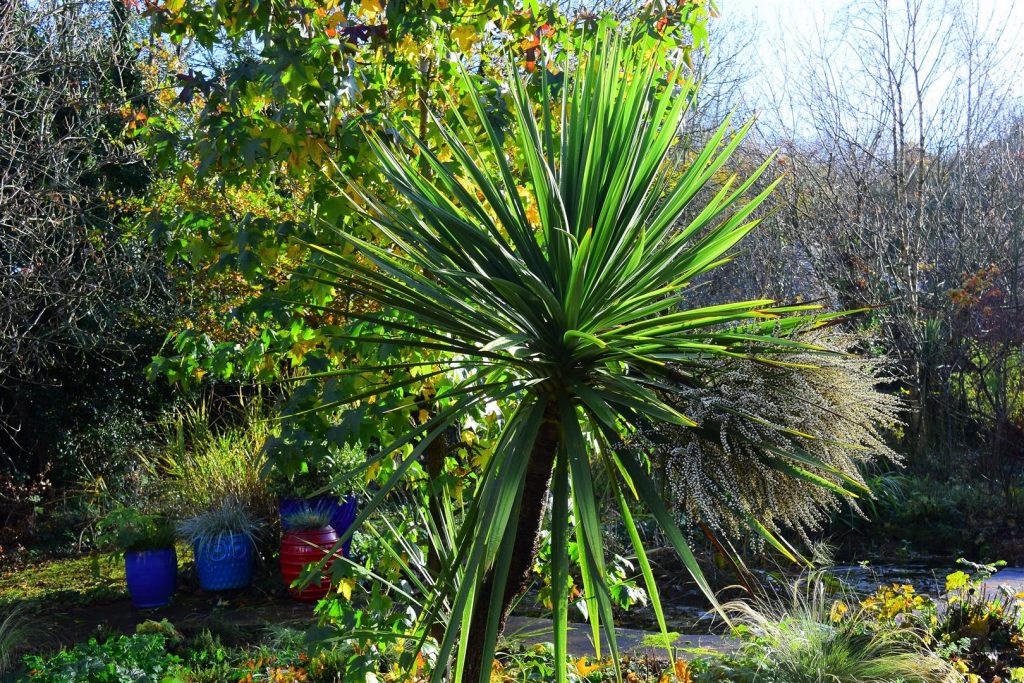
Gardening in January , particularly a wet January , can be hard going and even visiting a garden can be a chore as everything is sodden , squelch squelch time underfoot and no joy but the key is design , design , design . I often mention the necessity to design for the winter with trees and shrubs that have great bark like the awesome silver birch and really this is the only tree to have for winter colour however when planting it you need to be aware that silver birch will grow quite big so be sure and give it room to mature , a lot of people think it is a small tree or a tree suitable for small gardens and it is not , it needs space and what really PISSES me off is when I see a silver birch that has had half it’s height lopped off … the tree looks pitiful and all because the owner did not give enough thought when planting it , the tree will recover and in Summer when the leaves are on it looks OK but in winter it just stands there looking miserable and it will never recover it’s shape and although not too bad when it is one single silver birch but too often you see a row of them lopped off , a real crime against nature in my book .
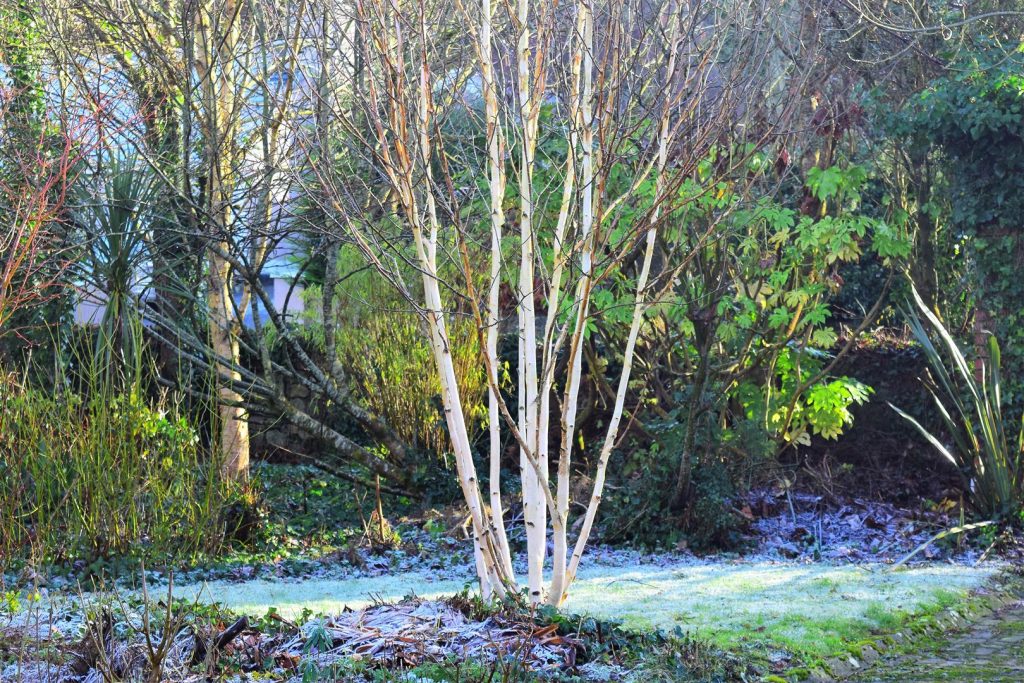
But the main thing is to be able to get around the garden in bad weather and to do that you need all weather paths and while all the design books say that paths are the last thing to put in a new garden to allow design of shrubberies , belts of trees etc. however here we did things in reverse in that faced with a virtual swamp of seven acres of wetland to begin with we designed paths to go all around the garden boundaries which allowed us access in wet weather and went on from there .
Our first paths through the Garden , October 2008
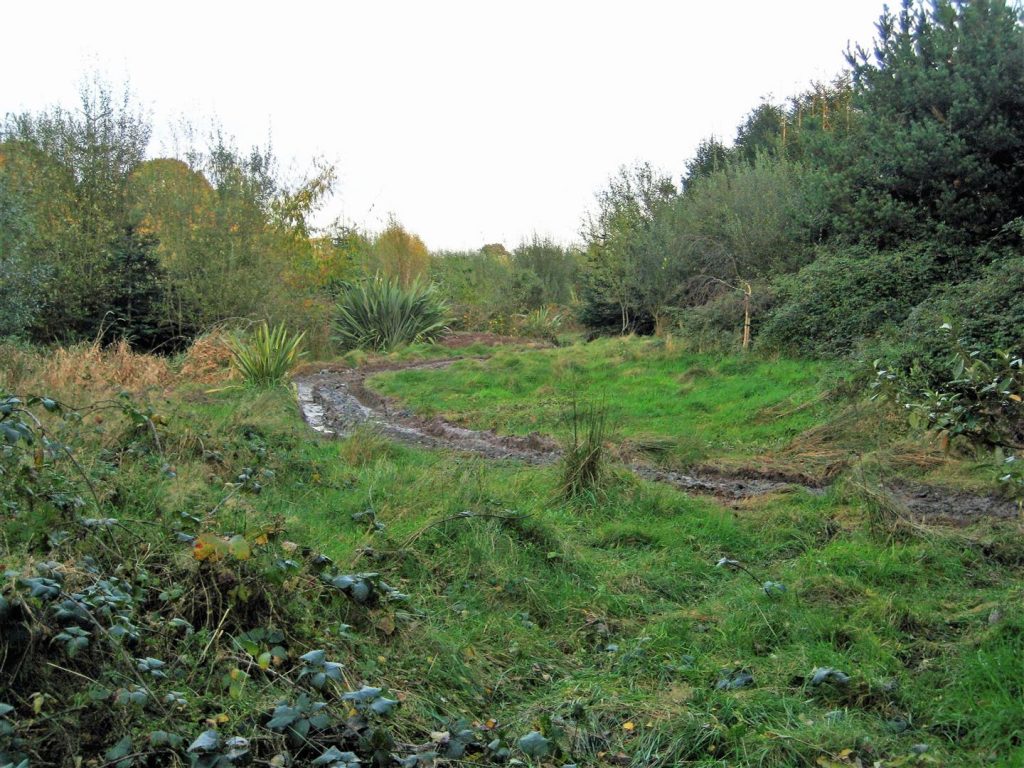
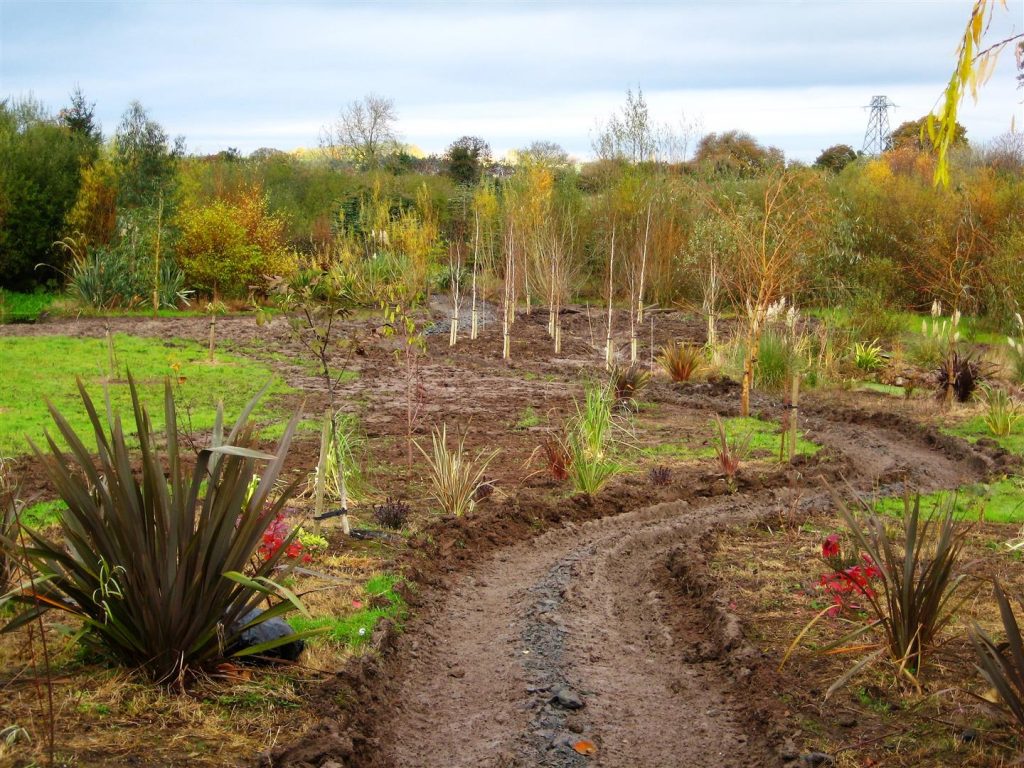
At times in the beginning in October 2008 the area looked like a WW1 battle battlefield there was so much mud but hope is a great thing and while there was no overall plan apart from getting access we ploughed on from there to create a series of rooms outside … mind you when I look back at the early photographs people must have detected some insanity in both of us !
We all spend a lot of time indoors looking out in the winter so it is necessary to bring the garden indoors if the house design and available space allows it and we designed most of our planting around the house to be seen from inside and John Brook , the great English garden designer , who died last year , coined a phrase for it back in the 1960’s when he called the garden “ the room outside ” .In February 2019 we redesigned our north facing kitchen by installing one long window in place of the original two and being north facing it didn’t bring in any additional light but boy did it bring the garden in .

Monarchs and aristocrats have spent huge money on gardens since the 17th century and a new book “ An Economic History of the English Garden ” by Roderick Floud details some of the extraordinary amounts such landscape designers as Capability Brown , the great English designer of the mid 1700 ‘s who earned over a BILLION pounds from clients in a forty year career while Frederick , the Prince of Wales in 1760 spent ten million pounds developing his garden at Carlton House in London with ONE tulip tree costing thirty eight thousand pounds ! The Duke of Marlborough built an artificial lake designed by Brown at Blenheim Palace in 1760 covering 150 acres with eight layers of lime and clay hammered in by hand to make it water tight … can you imagine the work and man power that went in to hammering clay by hand in over 150 acres … while around the same time in India the ruling Mughal princes were using elephants to hammer in the clay for their artificial lakes .



The Brits weren’t the only ones spending he money and Louis XIV in 1670 probably sparked it all off when he created the gardens at Versailles on over two thousand acres and the waters for his fountains at Versailles used more water than the entire city of Paris .
I have been to the gardens at Versailles and Bleinhim Palace and have also visited some of the Mughal water gardens in India , Versailles I was not mad about and found it to be too formal and too royal but Blenheim I loved especially the lake while in India the gardens were just for a display of royal power like at the Amber Fort in Jodphur but the water gardens in Udaipur created as private gardens for the princesses were fabulous as was the water gardens at the Taj Mahal .

The question most gardeners are asked on a regular basis is about pruning , how and when to prune and can you damage a tree or shrub by pruning at the wrong time . The short answer is you won’t cause any damage by pruning at the wrong time apart from perhaps stopping flowering the following year but obviously the best time is when growth is dormant which is generally November to March but these days with Google and You Tube help is at hand instantly but my rule of thumb is basically prune whenever you have the inclination and are walking around the garden with a secateurs in hand , always cut away any damaged or dead branches and in this garden here I also prune away any branches that get in my way either on the paths or when I am on the mower … today I was beside an apple tree that has a branch that always smacks me in the head when on the mower … well not anymore !
Roses I hear you say ? For the past hundred years gardeners have almost made a sacred religious ritual about pruning roses , a nick here , a small incision here , make the cut slanting downwards so the rain can slope off the branch , remove all crossing branches etc. etc. etc. with the result that amateur gardeners are scared to go near their roses … all rubbish as roses are hardy stuff and you can whack away at them without any fear of damaging or restricting their flowering and I will finish by telling you about a series of trials the Royal Horticultural Society carried out at Wisley , the RHS HQ , where they grew roses in two long beds side by side , one November the “ experts ” spent days of a nick here , a snip there on one rose bed while a single gardener took a chainsaw to the other rose bed and in ten minutes had levelled it … both rose beds grew back to the same height and health and both flowered equally as good … I know that some gardeners just love pruning the slow traditional way , the enjoyment is in the detail for them and I have no argument if that is your thing … you pick which method suits you best !
Some shrubs and trees need regular hard pruning to promote good bark colour especially golden willows and red dog woods or cornus as the regrowth is vigorous and the young or juvenile growth is more striking . A few years ago I began cutting all our golden willows to a single stem , cutting off all side shoots as this gives a nice head at whatever height you decide on , I generally cut ours to about five feet , laborious to begin with if you have a lot of willows but worth the effort as you end up with striking architectural trees on a single stem … I first saw this effect in Carl Wright’s wonderful garden in the Burren where he had three willow trees shaped in his water garden .
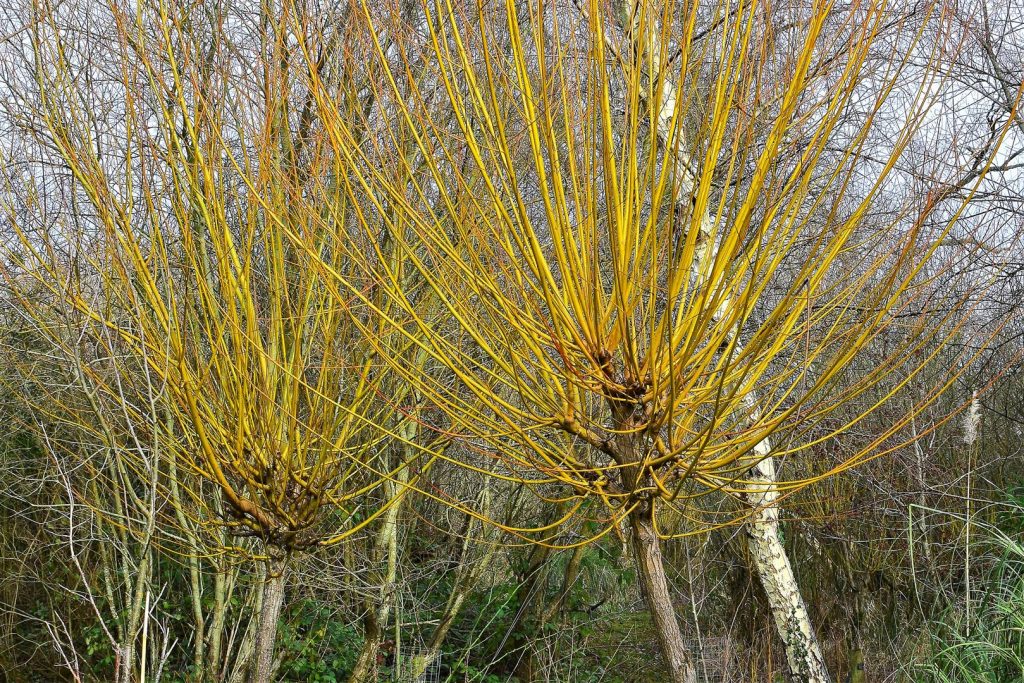
In January we start the hard pruning of the older trees and this week we had a professional woodcutter in for a day while we worked with him stacking and cleaning off the logs … a day to cut and three days hard graft by both of us to get the wood wheel barrowed to the wood shed near the house … the aches and pains get worse each year !
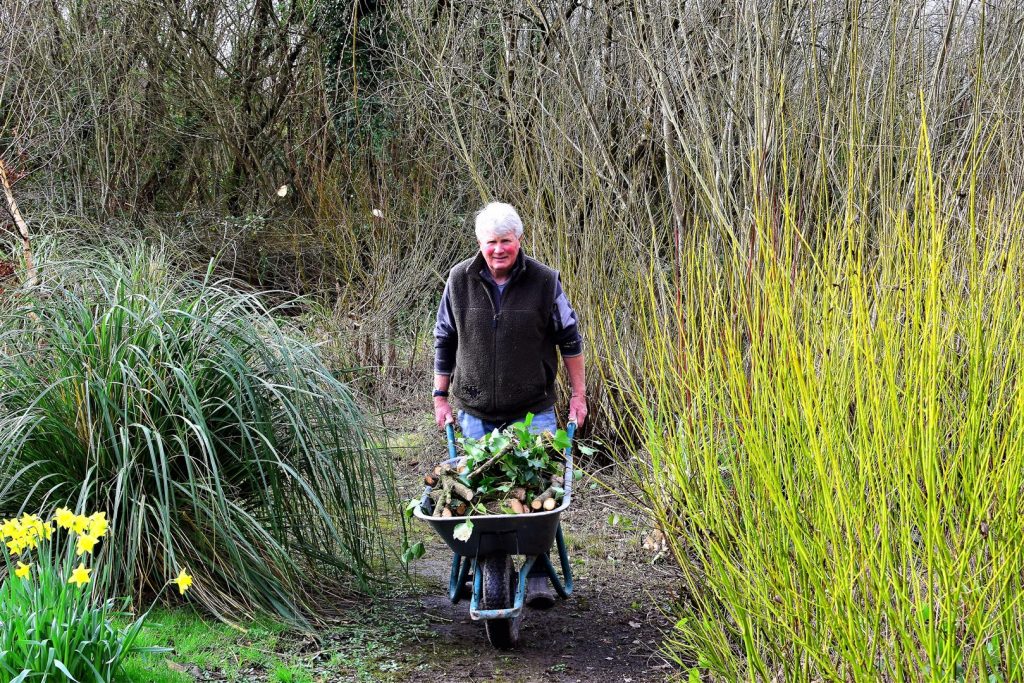
Walking around a garden in winter especially in January you are delighted with any plant that gives a bit of a show either through the bark colour or like this morning when I saw the first new leaves on an acanthus , a perennial originally from the Mediterranean region but which grows well in the UK and Ireland … one of the earliest plants to be propagated and the name comes from ancient greek , akanthus , and from 500 BC onwards the acanthus leaves were carved as a decoration at the top of Roman and Greek columns . Easy to grow and propagate and in some areas it can be invasive , never for me unfortunately as I love the plant and it throws up great flower spikes if you are lucky which are great bee pollinators , two varieties spinosa and mollis which just have different leaves and a great plant for every garden shrubbery or bed , just give it some space , sun or dappled shade and it is not a difficult plant , dampish conditions suit acanthus but it doesen’t suffer too much in dry areas either and no garden should be without an acanthus .
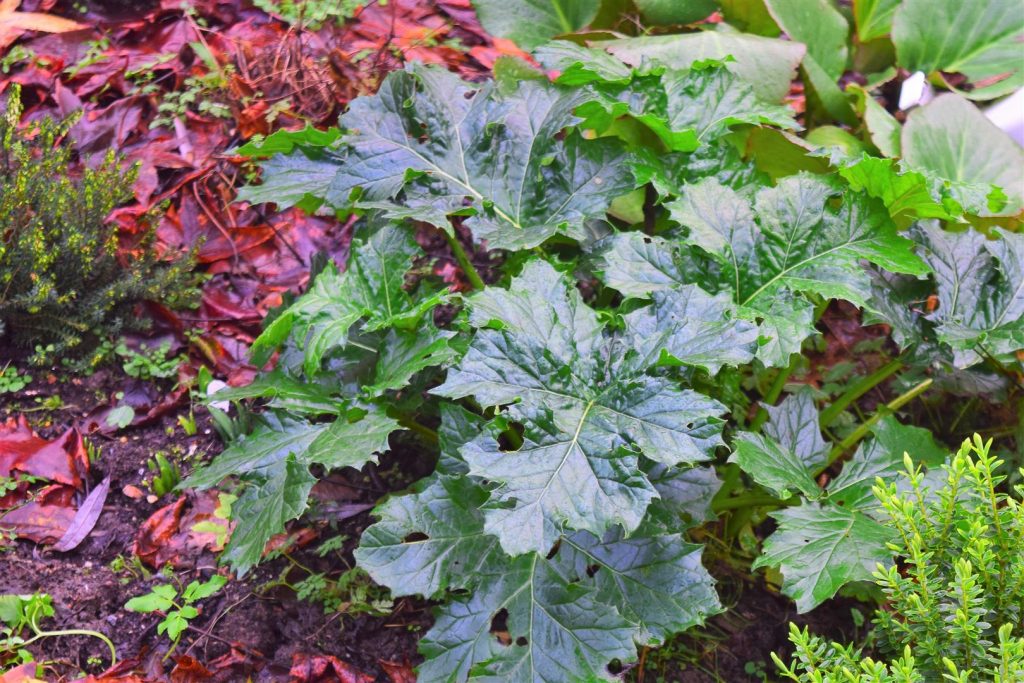

Another shrub that comes into it’s own in winter is the variegated eleagnus which is golden edged but never garish and I grow three types here , ebbengii limelight and the varieties gilt edged and maculate . The variety limelight is quick growing but you need to watch it as it reverts to green and unless you are ruthless about cutting out those green shoots you can lose the variegation completely and the green takes over , it can be pruned quite easily when the shrub is young but it is a quick grower and when it is six or seven years old it is usually three metres high and wide and you can easily miss the green growth . Gild edged is slow growing as is maculata and they don’t try and revert and the leaves stay nicely coloured as the shrub matures , a great addition to any garden and do well in sun or shade but they take about ten years to grow about a metre and a half … worth the wait though .
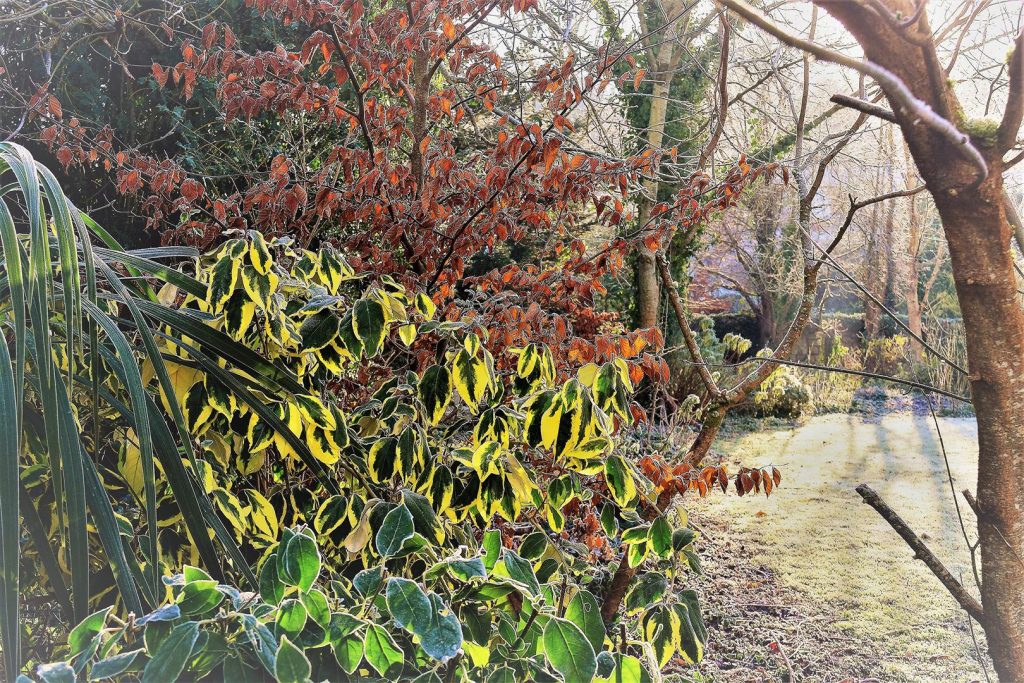
Finally a much under rated shrub is viburnum tinus and it is in winter and especially January /February that viburnum tinus comes into it’s own , a really nice all year dark green leafed shrub which is easily manageable to fit into any space and which can be hard pruned after flowering from April onwards into a nice ball if that is your thing or left to grow as big as it can get which is about two metres on all sides , whichever suits your design the tinus is a lovely shrub . We have many specimens here , some I let grow away but some in the front garden I cut into a ball about a metre high as I tend to plant them near solitary silver birch where the viburnum green leaf contrasts nicely with the white bark of the birch . Viburnum is equally good in large pots and the variety to get for a pot is Evelyn Price which is advertised as compact but does not always stay small, nothing rare or fussy about viburnum tinus and it will grow happily in shade and is one I would class as a back of border shrub although when in flower it is a knock out .
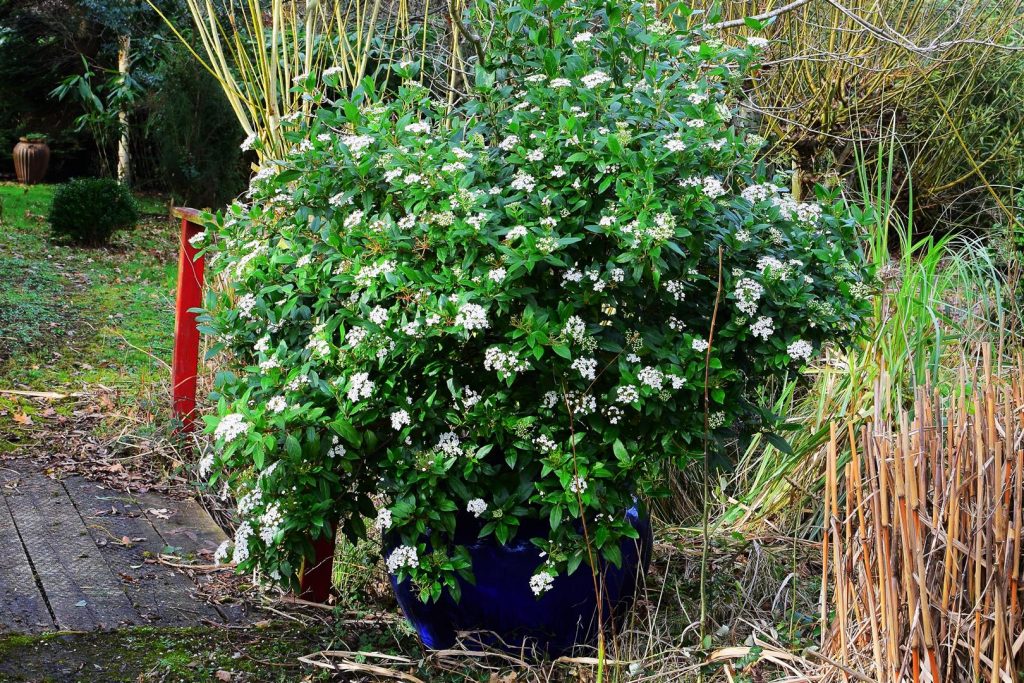
I am sure you are wondering when I am going to mention the title of this piece , “Rudolph is trapped in the pampas grass” and this came about when a neighbour out for a walk with her dogs called to say that a stag was trapped in the lower Garden and sure enough a young stag had got his antlers caught up in a clump of pampas grass and was trapped . I called in a local deer hunter as I thought the deer was injured and needed to be put down but John saw that all we needed to do was release Rudolph and he would be OK … not so easy as Rudolph was panicked and kept threshing about so with me holding the stags back legs John hacked through the pampas and Rudolph was up and away but not before throwing John one way and me the other as he streaked away to safety … still good he was none the worse for his pampas adventure and hopefully he will spread the word don’t mess with the pampas in Petrovska Garden !
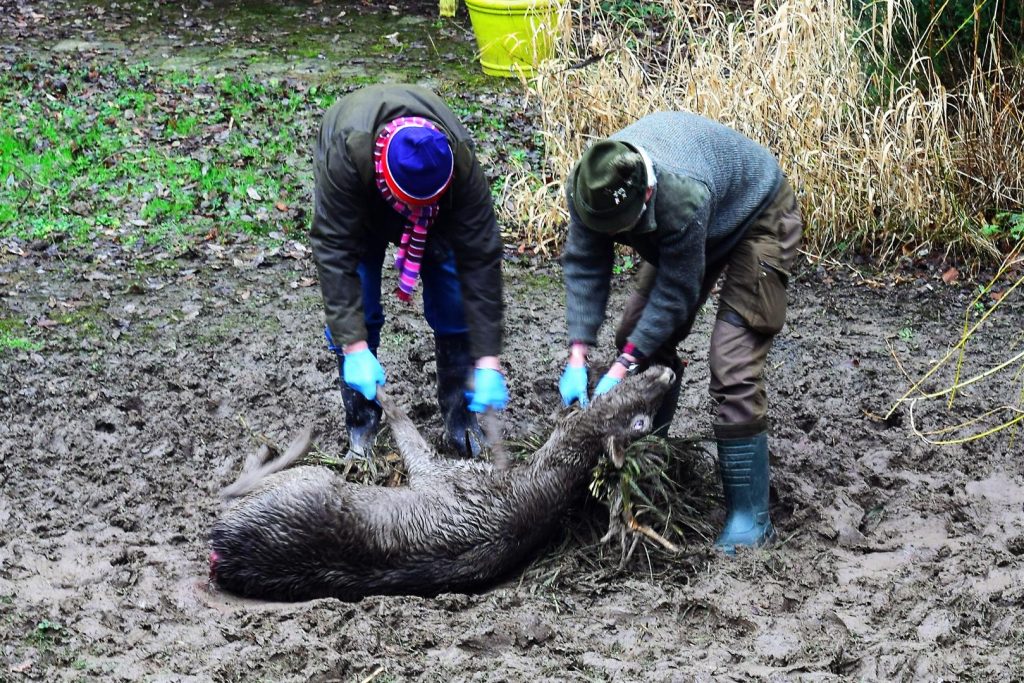


Leave a Reply